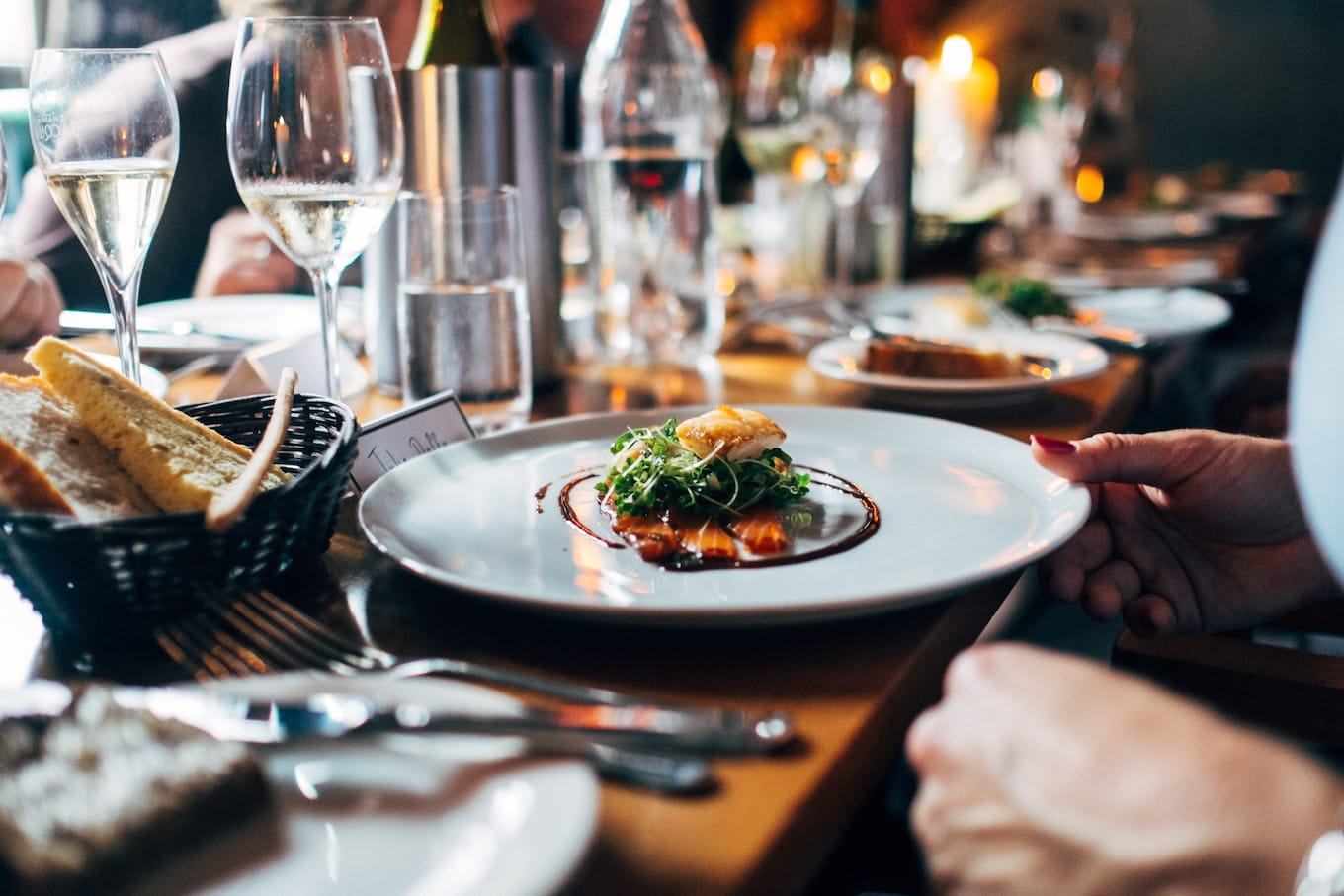How to make an unbeatable in-restaurant experience
Editorial Team
5 min read
In this digital era of IWWIWWIWI (I want what I want when I want it), one of the toughest challenges restaurant owners face is pulling guests off their phones, through the restaurant doors, and up to a table—and then getting them to do it again and again. Today, consumers have more options than ever for dining in, take out, on-the-go ordering, and at-your-door delivery, so how can restaurants compete? By creating an unbeatable in-restaurant experience.
Experience drives the numbers
More companies are realizing that providing standout service and a memorable experience makes great business sense. In fact, this AmEx reports that seven in 10 U.S. consumers say they’ve spent more money with businesses that deliver great service.
What’s more, it turns out that just one negative experience can have a significant impact on business. NewVoiceMedia reported that businesses lost $75+ billion in 2018 due to poor customer service—a $13 billion increase since 2016. On the flip side, this report suggests that even a moderate increase in customer experience can generate a revenue increase, averaging a gain of up to $823 million over 3 years for companies with $1 billion in annual revenues.
Realistically, most restaurants don’t generate $1 billion annually in revenue, but this principle holds true: improving the customer’s experience, even a little, can mean more in-restaurant guests and an increase to the bottom line.
What guests want
This restaurant customer experience survey found that guests want five things from restaurants: to engage, empower, hear, delight, and know them. But how can restaurants forge a meaningful customer experience? They can start with four simple ideas that offer guests what they want and create an engaging experience that keeps them coming back.
- Embrace your brand story and make guests a part of it. To stand out in a crowd of restaurants, figure out what makes your brand story unique, and share it with guests. Make them a part of it. Not sure how? Check out these tips on how to create a compelling brand story and design your front-of-house for a customer experience that reflects your brand.
- Know your customers by listening. How can you know what guests are thinking? By listening. Listen to guests as they express requests, needs, and challenges, and address them quickly to create memorable experiences that bring guests back. Take time to get to know your best customers. Learn what they like and what they don’t. And take time to learn their names. Hospitality, attentiveness, and anticipation are basal ingredients to creating a locale guests want to visit. Remember, too, that your staff are your front-line listeners, so hire well, teach them strong customer service skills, and train them to listen to guests. Make sure your front- and back-of-house are communicating effectively.
- Create a mood and environment that delights. The places we choose to return to create an atmosphere, evoke a mood, or conjure memories that we like and want to live with while there. Restaurants are places where aesthetics matter. From the murals on the walls, the furniture in the room, or the dishes cradling delicacies, each specific touch generates an environment that can attract or detract customers. What’s one of the most significant detractors? Dirt. Maybe you’ve been in a diner somewhere where the food was good, but the seats were torn, the windowsills sprinkled with dried food, and a weird stain lurked on the carpet. If you chose not to return, you’re not alone. 75% of U.S. consumers said they won’t patronize a restaurant with negative reviews about its cleanliness. Conversely, cleanliness, complimentary extras, and offering seating preferences go a long way to increase the number of repeat guests.
- Be socially engaging. Think food critics alone determine whether guests visit your restaurant? Think again. More people have turned to consumer reviews on sites like OpenTable, Yelp, and TripAdvisor than relying on reviews by professional food critics, and 98% read guest reviews before visiting a restaurant or ordering a meal. One Harvard Business School researcher even found that a one-star increase in a restaurant’s Yelp rating led to a 5-9% increase in revenue. Since 100M+ visitors turn to Yelp for information, ratings, and reviews on businesses of all kinds, especially restaurants, it’s important to make time to manage online reviews—reviews that can make or break a reputation. Fortunately, Yelp for Business Owners makes it easy to connect with guests, respond to reviews and complaints, and manage your Yelp page to help garner great Yelp reviews. Not convinced it’s important to manage online complaints? Check out this infographic to understand more about who complains, why, and how to embrace complaints.
As restaurateur and tech company co-founder David Joseph shared: “A restaurateur once said to me, ‘The most expensive seat in a restaurant is the empty one, because it’s costing you’.”
How can restaurants fill empty seats? By creating an in-restaurant experience that gives guests what they want—a culinary experience that’s simply unforgettable.
To learn more about how Clover can help you run your restaurant easier, contact a Clover Business Consultant today.
Related Posts
Green-thumbed entrepreneurs share their wisdom on growing a business
Full Service Restaurants (FSR)
Food and beverage industry trends for 2022
Popular Topics
Stay In Touch
Sign up and learn more about Clover.
Thank you for your subscription!
Recent Stories
- Is your business a victim of shrinkflation? Don’t pay more for shorter receipt rolls.
- How to buy a restaurant
- How to evaluate employee performance like an enterprise company
Please share your contact information
to access our premium content.
Thank you for sharing your contact information.
Download Now





